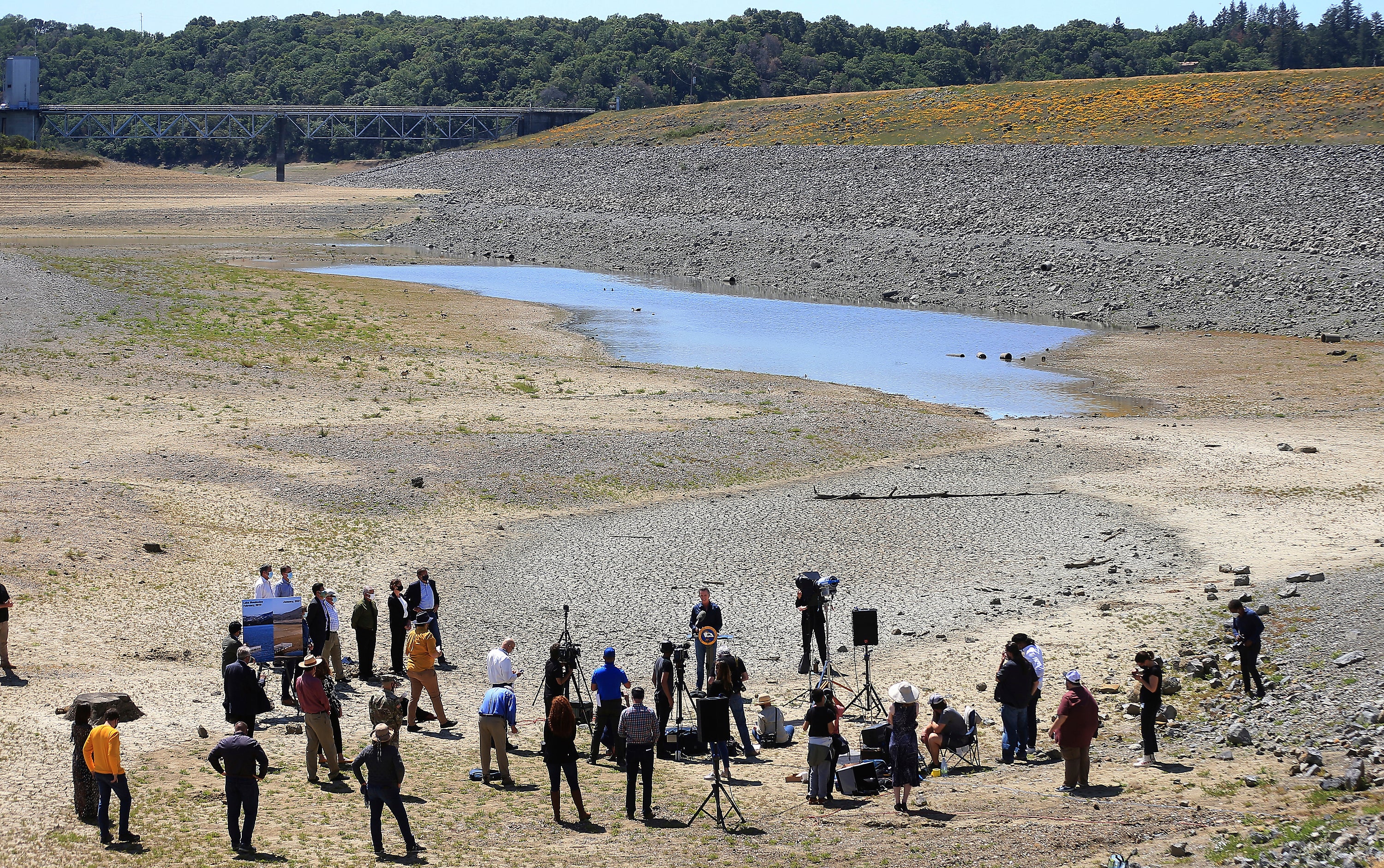California expands drought emergency to large swath of state
California Gov. Gavin Newsom has expanded a drought emergency declaration to a large swath of the nation’s most populated state amid “acute water supply shortages” in northern and central areas

Your support helps us to tell the story
From reproductive rights to climate change to Big Tech, The Independent is on the ground when the story is developing. Whether it's investigating the financials of Elon Musk's pro-Trump PAC or producing our latest documentary, 'The A Word', which shines a light on the American women fighting for reproductive rights, we know how important it is to parse out the facts from the messaging.
At such a critical moment in US history, we need reporters on the ground. Your donation allows us to keep sending journalists to speak to both sides of the story.
The Independent is trusted by Americans across the entire political spectrum. And unlike many other quality news outlets, we choose not to lock Americans out of our reporting and analysis with paywalls. We believe quality journalism should be available to everyone, paid for by those who can afford it.
Your support makes all the difference.Gov. Gavin Newsom on Monday expanded a drought emergency declaration to a large swath of the nation's most populated state amid “acute water supply shortages" in northern and central parts of California
The declaration now covers 41 of 58 counties, covering 30% of California's nearly 40 million people. The U.S. Drought Monitor shows most of the state and the American West is in extensive drought just a few years after California emerged from a punishing multiyear dry spell.
Officials fear an extraordinary dry spring presages a wildfire season like last year, when flames burned a record 6,562 square miles (16,996 square kilometers).
It comes as Newsom prepares to propose more spending on both short- and long-term responses to dry conditions. The Democratic governor last month had declared an emergency in just two counties north of San Francisco — Mendocino and Sonoma.
The expanded declaration includes the counties in the Klamath River, Sacramento-San Joaquin Delta and Tulare Lake watersheds across much of the northern and central parts of the state.
The Sierra Nevada snowpack, which provides about a third of the state’s water, was at just 59% of average on April 1, when it is normally at its peak.
This year is unique in the state’s recorded history because of extraordinarily warm temperatures in April and early May, the administration said. That led to quick melting of the Sierra Nevada snowpack in the waterways that feed the Sacramento River, which in turn supplies much of the state’s summer water supply.
The problem was worse because much of the snow seeped into the ground instead of flowing into rivers and reservoirs, the administration said.
The warmer temperatures also caused water users to draw more water more quickly than even in other drought years, the administration said, leaving the reservoirs extremely low for farmers, fish and wildlife that depend on them.
That all reduced the state’s water supplies by as much as what would supply up to 1 million households for a year, officials said.
“It’s time for Californians to pull together once again to save water,” California Natural Resources Agency Secretary Wade Crowfoot said in a statement.
He urged residents to limit their use, whether by limiting outdoor watering, checking for leaks, or taking shorter showers and turning off the water when washing dishes or brushing teeth.
Newsom’s declaration directs the State Water Board to consider changing the rules for reservoir releases and water diversions to keep more water upstream later this year to maintain more water supply, improve water quality and protect cold water pools for salmon and steelhead.
The declaration also allows more flexibility in regulations and contracting to respond to the drought, while speeding voluntary transfers of water between owners.